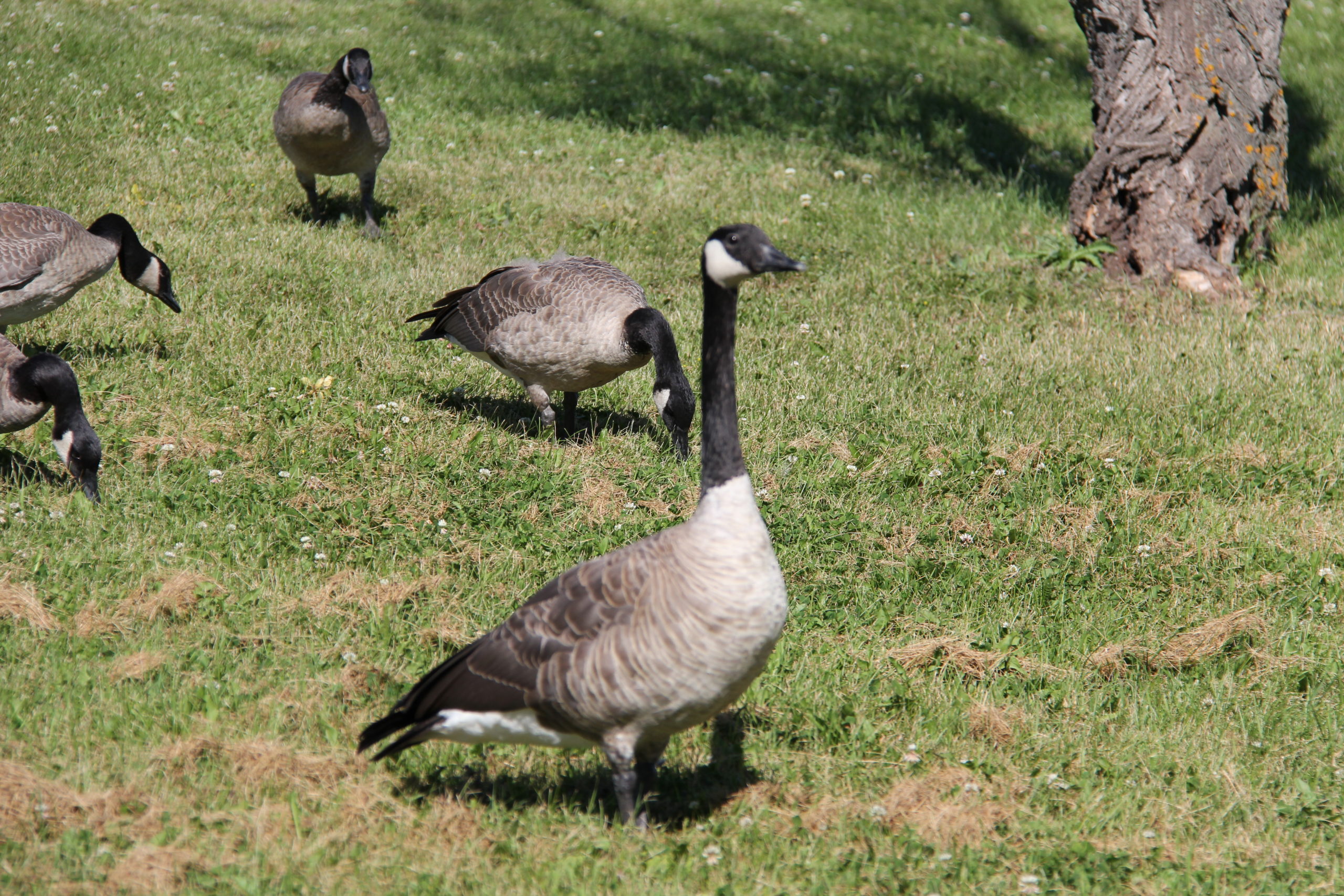In Canada, we accept the end of summer when we seethe leaves changing colour, the days getting shorter, frost coating windshields over night and signs for pumpkin-flavoured lattes and treats in every shop window!
Most notably, and perhaps most distinct to the North, the sound of honking fills the air as “V” shaped formations of Canada geese begin their yearly trip south of the border.
Along with the beaver, loon and polar bear, Canada geese are a national staple. Whether we’re witnessing their seasonal arrivals and departures or getting honked at when walking past a nest, Canadians know and love their fellow feathered Canadians.
Canada geese munch on grasses, sedges, eel grass and skunk cabbage during the spring and summer, and those who stick around Southern Canada for the winter enjoy lots of berries and seeds.
In the spring, you might notice many geese in areas with expansive green space.
To keep an eye on any incoming predators, the long-necked birds set up nests in parks, golf courses, school campuses and lawns. Female Canada geese use reeds, grasses, lichens, mosses and other plant materials to create nests for off spring, and prefer to set up camp near grassy fields, grain fields or water.
Females select nest sites, build the nest and incubate the eggs (usually four to seven per goose.) The male goose guards the nest while the female incubates.
Oh did I mention? Canada geese mate for life! Cute right? At around two years old, geese lock it down with a partner for breeding and the pair raises young, eats and migrates together, usually for the rest of their lives!
According to Allaboutbirds.org, Canada geese have very low “divorce-rates” and tend to stick together unless one dies.
Once goslings can fly and the soil beneath their breeding grounds starts to freeze, Canadian geese hightail it outta there!
Come winter, some geese settle for the more temperate winter climates of British Columbia, Southern Ontario and Southern Alberta, but most will head into the U.S. or even Mexico. Flocks tend to return to the same migratory locations on their journey, stopping in to eat and rest before continuing on.
Migratory groups of Canada geese include families and solo flyers. Stronger, more experienced geese fly closer to the front of the “V” formation.
Some scientists believe that the geese use the “V” to create a drafting effect, where the lead geese take the brunt of the air flow and the following geese benefit from air currents and can expend less energy. The “V” formation also coordinates the flock’s movements, allowing changes in pace or course to be communicated quickly amongst the birds.
According to Hinterland Who’s Who, some geese have been recorded travelling up to 1,000 kilometres a day!
Canada geese are pretty amazing! But don’t step on their territory—and if you do, get out of there quick! A Canada goose that feels threatened may do some head pumping, tongue raising, hissing, honking and feather vibrating, and might even try to take a nip at you.
So how do you know if a goose needs your help? And how do you help? A goose that sticks to the same location and doesn’t appear to fly might be injured. Your best bet for helping him or her is to call AIWC at (403) 946-2361.
AIWC is open 365 days a year. Starting this September until April, hours of operation are 9 a.m. to 5 p.m.
Check out AIWC’s Instagram account to see a Canada goose patient in recovery.
“Wildness is the preservation of the World.”― Henry David Thoreau
By Nina Grossman, AIWC Volunteer
Sources:
Allaboutbirds.org
hww.ca
aep.alberta.ca






